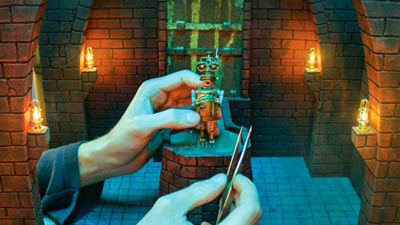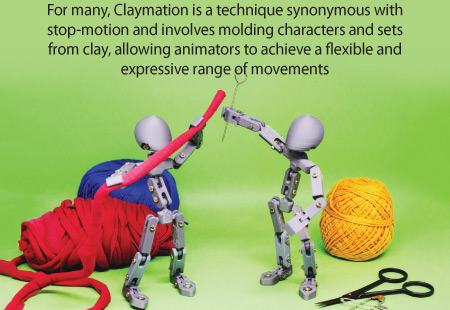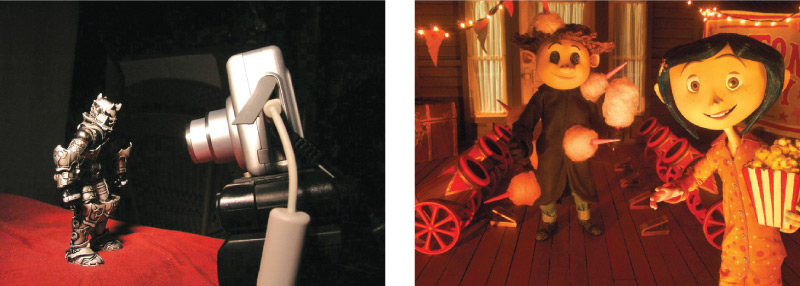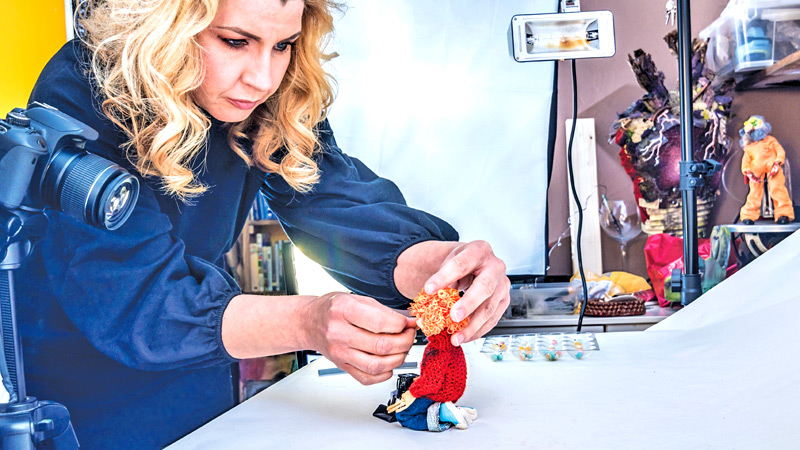In the vast landscape of animation, stop motion stands out as one of its most laborious, yet captivating techniques. Unlike most other traditional animation techniques, Stop-motion involves the use of physical models instead of drawings or CGI, which are meticulously moved in small increments between photographed frames.
 Put together, these frames create the illusion of motion. As can be expected with such a process, stop-motion animation is quite costly and time-consuming to produce, but results in a unique visual spectacle that is hard to replicate.
Put together, these frames create the illusion of motion. As can be expected with such a process, stop-motion animation is quite costly and time-consuming to produce, but results in a unique visual spectacle that is hard to replicate.
The roots of stop-motion animation trace back to the early days of filmmaking, with the ‘stop trick’ using similar principles of frame manipulation to create rudimentary special effects. Early instances of stop-motion animation were pretty much the default method for depicting nonhuman characters and were also used to create more complex practical special effects.
It was common practice for films to superimpose animated figures on screen alongside live actors, creating the illusion that they were real and interacting with each other. Countless films of the silent era of film employed stop-motion trickery, pushing the limits of what was possible with practical movie magic.
Groundbreaking work
 The legendary Willis O’Brien elevated stop motion to new heights in the 20th century. His groundbreaking work on “King Kong” (1933) demonstrated the potential of stop motion in crafting awe-inspiring creatures and bringing them to life on the silver screen, inspiring generations of filmmakers after him to realize the full potential of stop motion animation. Ray Harryhausen was another major figure in the field of stop-motion animation, with his massively ambitious films such as Jason and the Argonauts (1963) and Clash of the Titans (1981), being milestone works celebrated to this day.
The legendary Willis O’Brien elevated stop motion to new heights in the 20th century. His groundbreaking work on “King Kong” (1933) demonstrated the potential of stop motion in crafting awe-inspiring creatures and bringing them to life on the silver screen, inspiring generations of filmmakers after him to realize the full potential of stop motion animation. Ray Harryhausen was another major figure in the field of stop-motion animation, with his massively ambitious films such as Jason and the Argonauts (1963) and Clash of the Titans (1981), being milestone works celebrated to this day.
At its core, stop motion animation involves capturing a series of still images, or frames, with slight adjustments in each frame to create the illusion of movement when played in sequence.
This meticulous process requires immense patience, precision, and a keen eye for detail. Animators manipulate physical objects, puppets, or even clay characters, meticulously adjusting their positions between each frame to craft fluid motion.
Despite the precision and laborious effort that goes into perfecting the craft, faults still seep through, however, these are seen as a distinctive feature of stop motion rather than a problem, highlighting the tangible, tactile nature of the characters and sets. The imperfections and textures of real-world materials contribute to the sense of physicality that is not typically seen in other forms of animation, such as 2D or CGI.
Unique methods
Stop-motion animation encompasses a variety of techniques, each utilizing unique methods and materials. For many, Claymation is a technique synonymous with stop-motion and involves molding characters and sets from clay, allowing animators to achieve a flexible and expressive range of movements.
This technique gained mainstream popularity with the works of Nick Park, such as the “Wallace and Gromit” franchise, and “Chicken Run” film. More recently, claymation has been a staple of LAIKA studios, which has been responsible for many modern classics like Coraline (2009), Paranorman (2012), and Kubo and the Two Strings (2016).
Other techniques include puppet animation which involves manipulating articulated puppets, pioneered by animators like Ray Harryhausen. Object animation takes everyday objects and imbues them with life through stop motion. Stop-motion isn’t even restricted to the manipulation of inanimate objects, as is the case with the pixilation technique, which poses live actors frame by frame, in order to achieve more practical special effects in live action or to blend live performers with animation on screen.
While stop-motion animation has deep roots in traditional filmmaking, contemporary animators have embraced digital tools to enhance the process. The integration of digital technology allows for smoother workflows, precise control over lighting and camera movements, and the ability to seamlessly combine stop motion with other animation techniques. Some CGI productions aim to recreate the visual style of stop-motion, such as the Boxtrolls (2014) and Robot Chicken.
Traditional techniques
Despite these technological advancements simplifying many of its most difficult aspects, many animators insist on maintaining traditional techniques to emphasize the importance of preserving the tactile quality of stop motion.
The blend of handcrafted elements with digital enhancements strikes a balance between tradition and innovation, ensuring that stop motion remains a dynamic and relevant form of storytelling in the digital age, on par with its less costly counterparts.
Stop-motion animation continues to captivate audiences with its unique blend of nostalgia and innovation. Recent successes like Guillermo del Toro’s Pinocchio (2022), Isle of Dogs (2018), and the upcoming Chicken Run sequel demonstrate that stop motion can not only stand the test of time but also thrive in the competitive landscape of modern animation.










